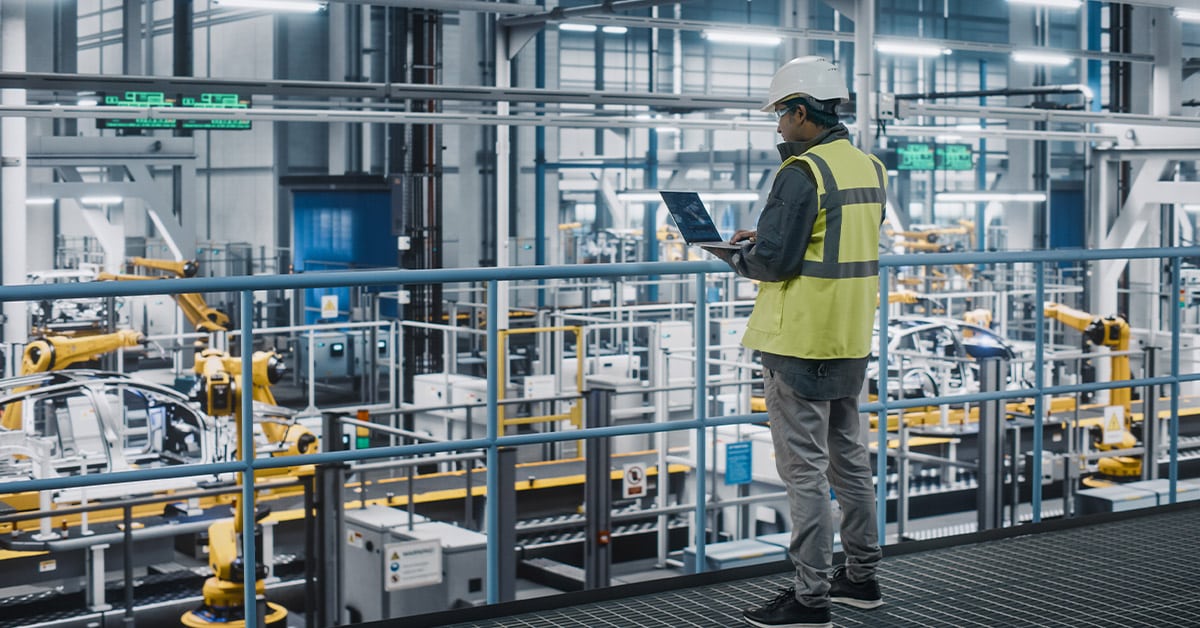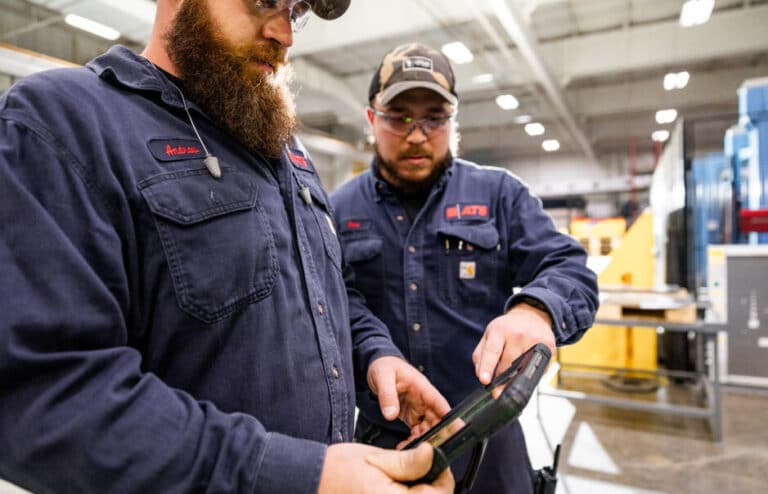Maintenance is key to extending asset life, but servicing and repairs are only part of what’s involved. The practice of enterprise asset management encompasses maintenance but takes a broader, cradle-to-grave approach.
This blog explains what enterprise asset management entails, the benefits it delivers and how it relates to computerized maintenance management systems (CMMS). If you’re looking for ways to reduce CapEx and OpEx, this blog will provide some ideas to follow up on.
What is enterprise asset management (EAM)?
Every manufacturing business purchases machinery, puts it into service, maintains it and eventually has to retire it. Enterprise asset management is a holistic approach to managing those activities, with the goal of maximizing value for the business. The heart of an EAM system is asset lifecycle management, built around an asset database, but including maintenance planning, scheduling and recording, and environmental, health and safety (EHS) compliance activities. Procurement, inventory management and financial and labor reporting are also part of EAM.
EAM is often adopted by larger, multisite organizations with complex asset management challenges, significant expenses and potentially greater opportunities.
Enterprise asset management benefits include:
- Extended equipment life
- Higher resale/disposal values
- Lower maintenance costs
- Reduced breakdown frequency
- Higher OEE
- Compliance with EHS requirements
An enterprise asset management system is implemented through enterprise asset management software.
Functions of EAM software
The typical EAM product addresses the following functions and activities:
- Asset lifecycle management: A repository of information about each physical asset. It typically includes asset identification, dates of purchase and installation, location and records of significant repairs or upgrades. In the case of larger equipment such as complete lines or special purpose machinery, a maintenance lifecycle management approach ensures service and overhaul needs are identified and a complete history is kept of work performed.
- Work order management: Supervisors or managers in the factory may request maintenance support, and the maintenance planning system, whether using a predictive or scheduled strategy, will also identify maintenance needs. Work order management is the activity of reviewing these inputs, scheduling the work needed and generating instructions to get it done.
- MRO: Servicing, routine maintenance and repairs require materials and replacement parts. A well-organized MRO parts function tracks usage and ensures sufficient quantities are on-hand and in known locations without building excessive inventory.
- Labor management: This enables labor scheduling across multiple sites and shifts. Additional capabilities include measuring utilization and recording training and certifications held.
- Financial management: EAM software can link to financial packages, capturing labor and MRO costs for inclusion in monthly, quarterly and annual reports.
- Analytics & reporting: Data captured by the EAM program should form the basis of measurement and improvement. The high volume of events and transactions means this is best handled by analytics tools and even AI. KPIs such as mean time to repair (MTTR) are often presented in the form of dashboards, customized to meet the needs of maintenance managers.
Enterprise asset management best practices
To maximize the ROI from an EAM system, it helps to adopt some recognized best practices:
- Standardize processes: Every task within an EAM should be performed the same way otherwise variations will cloud the data generated and make measurement and improvement difficult. Consistent workflows are the key!
- Use it to drive preventive maintenance: Generate work requests based on a schedule or, better still, instrument assets to enable a predictive maintenance strategy.
- Identify where to make improvements: Develop and implement KPIs that drive improvements in asset availability and maintenance performance. Look for activities with high variability and find ways to narrow their range.
- Use it as a collaboration tool: The EAM system works across departments and functions. Providing access to data, incorporating these functions into the workflow and inviting contributions to improvement efforts increases communication, in turn improving responsiveness, engagement and business performance.
EAM vs. CMMS
As one of the functions of an EAM system is maintenance, an obvious question is how it relates to the CMMS already in use in many plants. EAM and maintenance management systems are similar but not the same. The differences are:
- Scale: A CMMS is used at the level of an individual plant or even within functions at a plant. EAM software is intended for businesses operating over multiple locations and therefore at a larger scale.
- Lifecycle status: A CMMS addresses needs when an asset is in service. It does not cover procurement or retirement and disposition activities.
- Functionality: An EAM has links into the finance function for cost reporting, and possibly also into the human resources management system (HRMS), the EH&S system and even the quality and purchasing systems. This functionality is not part of a CMMS.
Helping manufacturers improve maintenance performance
Manufacturing businesses depend on the machinery and equipment that produces their products. These assets must be maintained to achieve the rate and quality of output required, may require periodic overhaul and must eventually be replaced.
Enterprise asset management is about caring for these assets. It seeks to maximize their life, which reduces CapEx requirements, while minimizing the cost of keeping them running (OpEx). EAM software helps manufacturers pursue these objectives.
As a leader in factory maintenance and MRO, ATS has expertise in all aspects of asset management. We help manufacturers in sectors from aerospace and automotive to building products and consumer packaged goods improve their maintenance operations, reducing both CapEx and OpEx. Contact us to learn more.


